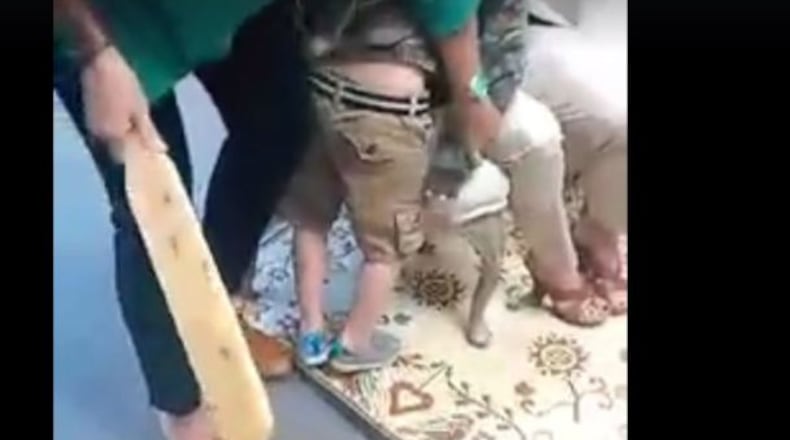While the use of corporal punishment has declined in Georgia schools, it still remains legal to paddle students.
Amy Bryant wants to change that. Bryant is a mental health therapist in Atlanta who specializes in helping families that struggle with stress behaviors, school refusal, suicidal ideation, self-injury, anxiety and depression. In a guest column, she urges an end to corporal punishment in schools.
U.S. Secretary of Education Miguel Cardona wrote a letter in March pushing for the end of corporal punishment in schools. Data from the National Center for Education Statistics show 70,348 public school students experienced corporal punishment in the 2017-2018 school year, the most recent national data available. Black students represent 15% of public school enrollment yet account for 36% of the kids punished physically in 2017-2018.
In Georgia, more than 1,500 students experienced corporal punishment during the 2021-22 school year, according to state data. Most of those disciplinary actions took place in smaller, rural school districts. None occurred in metro Atlanta districts.
By Amy Bryant
In the year 2023, it is still legal for public and private school employees to hit students with a wooden paddle in order to cause deliberate pain and fear in response to unwanted behavior. It is still legal in 17 states and still practiced in Alabama, Arkansas, Arizona, Florida, Georgia, Idaho, Kentucky, Louisiana, Mississippi, Missouri, North Carolina, Oklahoma, South Carolina, Tennessee, Texas and Wyoming; it is also legal in all private schools except in New Jersey, Iowa and Maryland.
A paddle brought to school by a student and used to hit another child would be considered a weapon, yet school staff are allowed to use one to strike kids. If an adult used a paddle against another adult, it would be considered assault. Imagine how much more painful, scary and dangerous it is for someone who is much smaller to be hit with a paddle.
By law, teachers and school counselors are mandated reporters and obligated to report injuries inflicted by the use of the paddle. But when these injuries occur at school at the hands of school staff, our mandated reporters remain silent.
While this is all alarming to think about, there is hope. As it turns out, 91% of schools report they do not use corporal punishment at all. Which means only 9% of schools continue to hurt and scare students as a form of discipline, while the vast majority have found ways to discipline students without hitting them.
Some may be quick to argue that this change has resulted in more dangerous behaviors. But research is clear: Children who are hit as a form of discipline show more aggressive behaviors, have worse grade-point averages in high school, display more depressive symptoms and are more likely to struggle with addiction and domestic violence as adults.
Earlier this month, the American Academy of Pediatrics released an updated policy statement recommending that corporal punishment “be abolished in all states by law and replaced by alternative forms of student behavior management.”
The statement noted: “Corporal punishment remains legal in many public and private schools in the United States and is disproportionately used among Black students and children with disabilities.”
Asking for a federal ban on the use of paddles in school is really a request to expand policies already in place in institutions that focus on kids. Hitting children as a form of discipline is already banned in foster care and juvenile justice settings.
As a mother and mental health therapist, and in alignment with organizations such as Prevent Child Abuse America, the U.S. Alliance to End the Hitting of Children and the American Academy of Pediatrics, I am asking that protection be extended to school settings.
The 9% of schools still hanging on to paddling in their discipline policies should reexamine the research and adopt effective alternatives to corporal punishment that cause less harm. The anti-bullying policies in most schools should apply equally to the adults in schools.
If the overall goal is to end violence against children, there is no room for negotiation.
About the Author
The Latest
Featured



